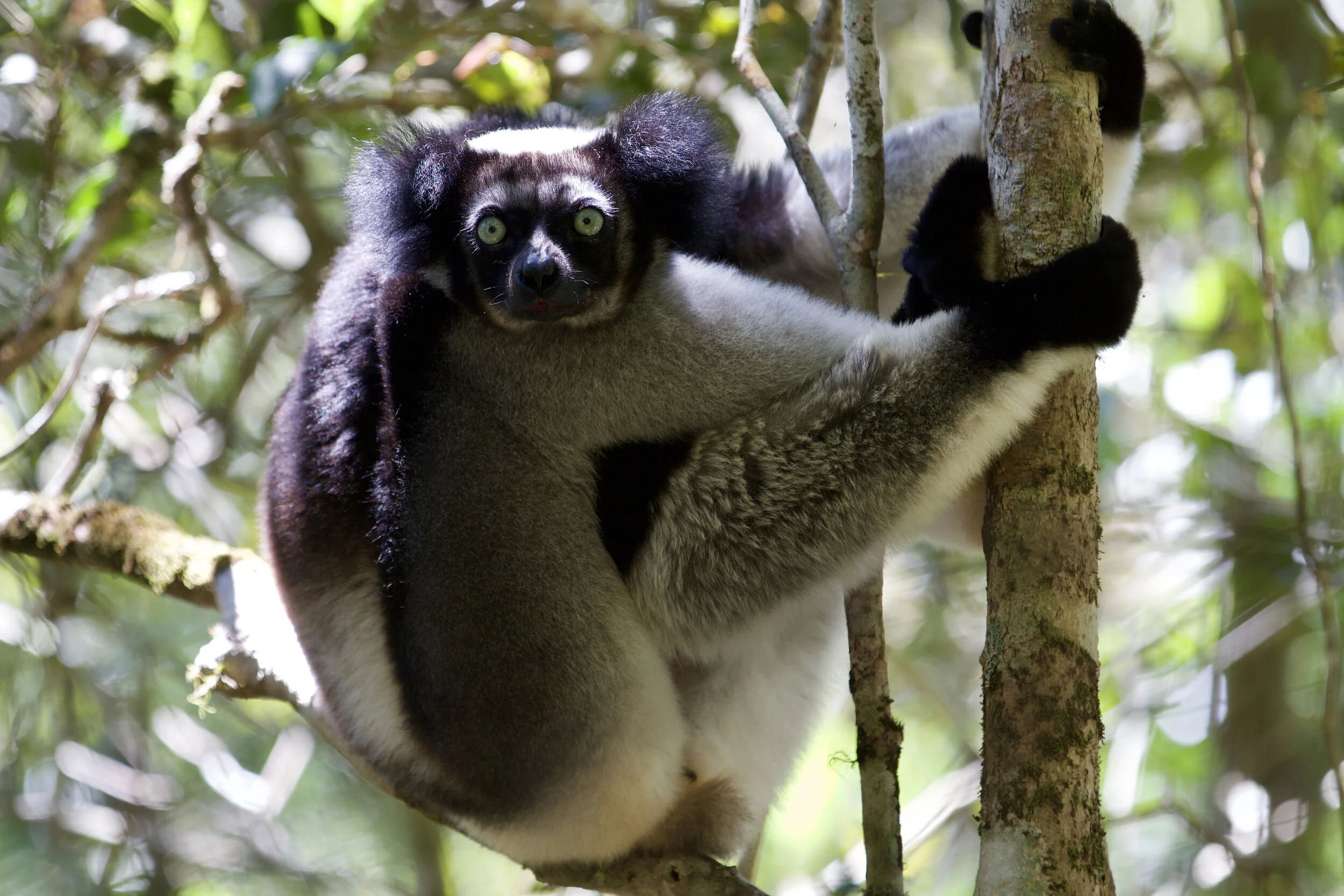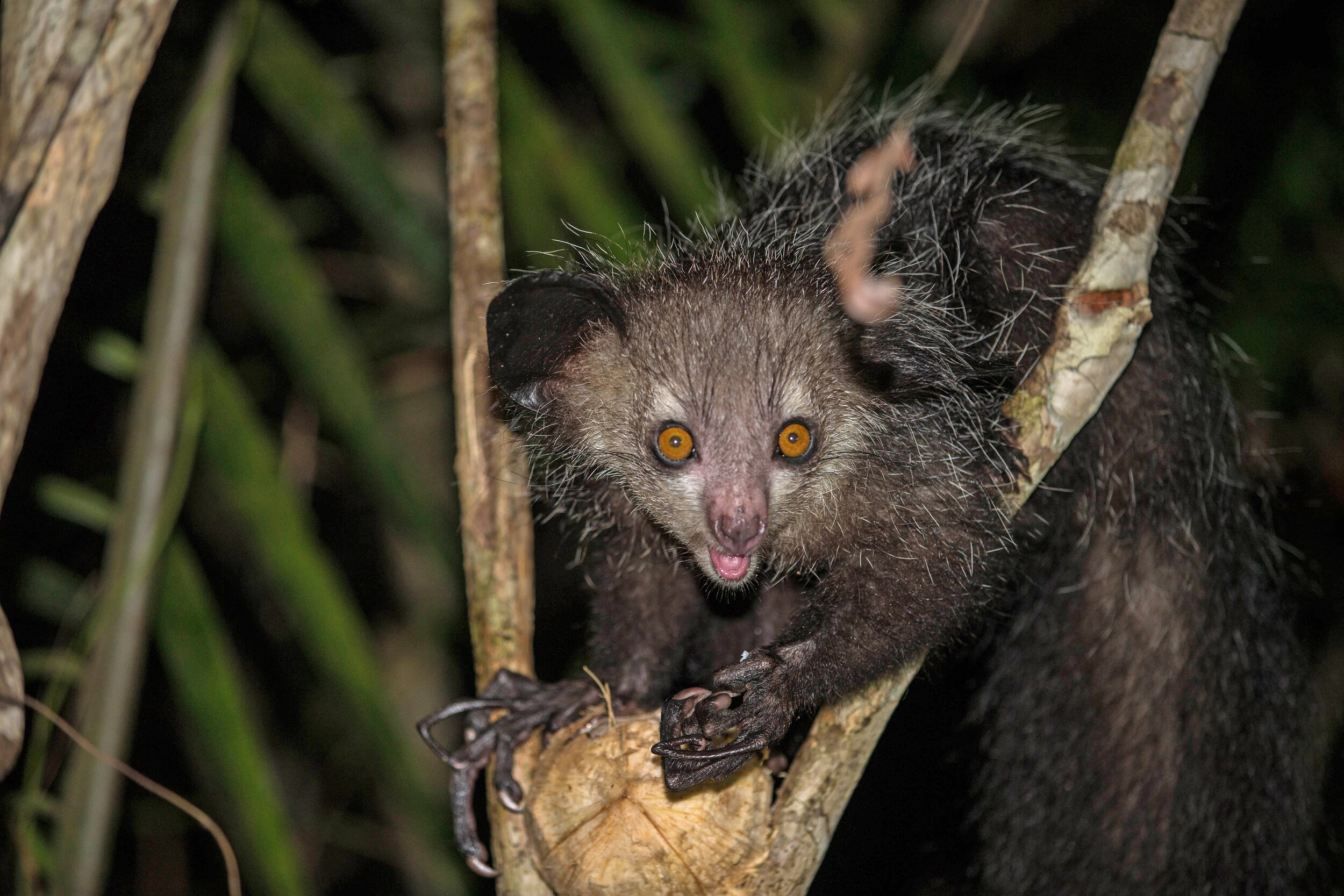Lemur Tales
/By Jahssme Guillaume
Indri lemur in Adasibe National Park, Madagascar, T. Steffens
Once upon a night, centuries ago, in the forests of Madagascar, explorers on a Portuguese expedition laid asleep. They had lost friends on this journey and the terrains had tested their survival. Suddenly, otherworldly sounds emerged from the darkness, ripping the adventurers out of their slumber. They saw the bright orange eyes of the haunting creatures piercing through the darkness. Could these be the spirits of the friends they had lost (Romberg, 2020)?
The morning light revealed that the haunting ghosts were not ghosts at all, but large-eyed, monkey-like creatures (Romberg, 2020). The explorers named these mysterious creatures “lemurs,” a word coming from the Roman “spirits of the dead” (Romberg, 2020).
That is just one story of the origin of the word “lemur.” Before those explorers landed on Madagascar, lemurs lived alongside humans for thousands of years. In Malagasy language, lemurs are called “gidro.” With more than one hundred different species of lemur found in Madagascar, there are many fascinating stories and traditions that surround the lemurs, and that also play a role in their conservation.
Aye-aye
The aye-aye’s bizarre physical attributes along with its nocturnal lifestyle, have resulted in a “fady,” meaning taboo in Malagasy (Virun, 2018). As the stories go, ill fortune comes to those who the aye-aye points it’s slender long middle finger at; bringing death, disease and suffering (Aye Ayes Project, n.d.). Even the aye-aye’s name is believed to mean “I don’t know,” in an effort not to speak its name (Simons & Meyer, 2001). Some tales say that the aye-aye sneaks into villages at night and stabs its petrified victims in the aorta with its skeletal middle finger (Aye Ayes Project, n.d.).
While in one area, the taboo surrounding aye-ayes may protect them, in others they may be persecuted (Virun, 2018). Sadly, the aye-aye is one of the 25 most threatened primates (Randimbiharinirina et al. 2019), but there are many conservation organizations working to protect this species. For example the late Alison Jolly and Hanta Rasamimanana chose the aye-aye for an illustrated children’s book called the Ako project, which aims to teach Malagasy children about why lemurs are unique and important.
Aye-Aye; nomis-simon, CC BY 2.0 <https://creativecommons.org/licenses/by/2.0>, via Wikimedia Commons
Indri
Indri are the largest living lemur, and are called “Babakoto,” meaning Ancestor of Man. There are many legends surrounding the indri, but one story goes that a young boy was moving through the forests in eastern Madagascar. In search of honey, he climbed a tall tree when someone below cut the vines, leaving him stranded in the tree. Out of nowhere, the boy was saved by an indri swinging through the trees.
This story--where the indri is a saviour--and others like it have helped to protect the indris, with some believing that Indris are ancestors.
Indri lemur, T. Steffens
Sifaka
The sifaka, which is one of the many lemurs found in areas where Planet Madagascar runs our projects, has a similar story to the Indri. It is taboo to hunt this lemur because of the stories that seem to humanize their existence - literally! Although the stories range from community to community, they point to one similar thing, these lemurs were once human (Anania et al., 2018). Not only that, but it is said that they existed as a family member, whether it was a wife or a son (Anania et al., 2018). This is further reinforced by their physical similarities to humans and complex behaviours individually and within groups (Loudon et al., 2006).
Coquerel’s sifaka in Ankarafantsika National Park, T. Steffens
Community Efforts
It is clear that stories can have a powerful impact on the conservation status of lemurs, for better or for worse. However, lemurs remain the most endangered group of animals on the planet. Planet Madagascar partners with Malagasy communities to create awareness about the conservation plight of lemurs, while also working with people to improve their livelihoods. Our projects provide employment and we are working to develop sustainable food options and a sustainable economy through efforts such as our beekeeping initiative. Through these efforts, Malagasy people continue to work tirelessly toward protecting the legendary lemurs.
So what can I do to help?
You can help support our projects through adopting an hectare of forest, adopting a lemur, shopping on our online store, and/or simply donating what you can—a little goes a long way to supporting our projects. Join us and the many people of Madagascar working to protect the beloved lemurs.
References
Anania, A., Salmona, J., Rasolondraibe, E., Jan, F., Chikhi, L., Fichtel, C., Rasoloarison, R. (2018). Taboo adherence and presence of Perrier’s sifaka (Propithecus perrieri) in Andrafiamena forest. Madagascar Conservation & Development, 13(1), 6–14. https://doi.org/10.4314/mcd.v13i1.1
Legends and Myths. Aye Ayes Project. (n.d.). https://ayeayesproject.weebly.com/legends.html.
Loudon, James E.; Sauther, Michelle L.; Fish, Krista D.; Hunter-Ishikawa, Mandala ; and Ibrahim, Youssouf Jacky, "One reserve, three primates: applying a holistic approach to understand the interconnections among ring-tailed lemurs (Lemur catta), Verreaux's sifaka (Propithecus verreauxi), and humans (Homo sapiens) at Beza Mahafaly Special Reserve, Madagascar" (2006). Ecological and Environmental Anthropology (University of Georgia). 7.
Romberg, C. (2020, August 29). The Power of Storytelling to Inspire Lemur Conservation. Lemur Conservation Network. https://www.lemurconservationnetwork.org/the-power-of-storytelling-to-inspire-lemur-conservation/.
Simons, E., Meyers, D., & Klensang, H. (2001, July). Folklore and Beliefs about the aye-aye. (J. U. Ganzhorn, K. Glander, B. Rakotosamimanana, M. Schwibbe, A. Ganzhorn, B. M. Raharivololona, … B. Thede, Eds.) Lemur News, pp. 11–15.





